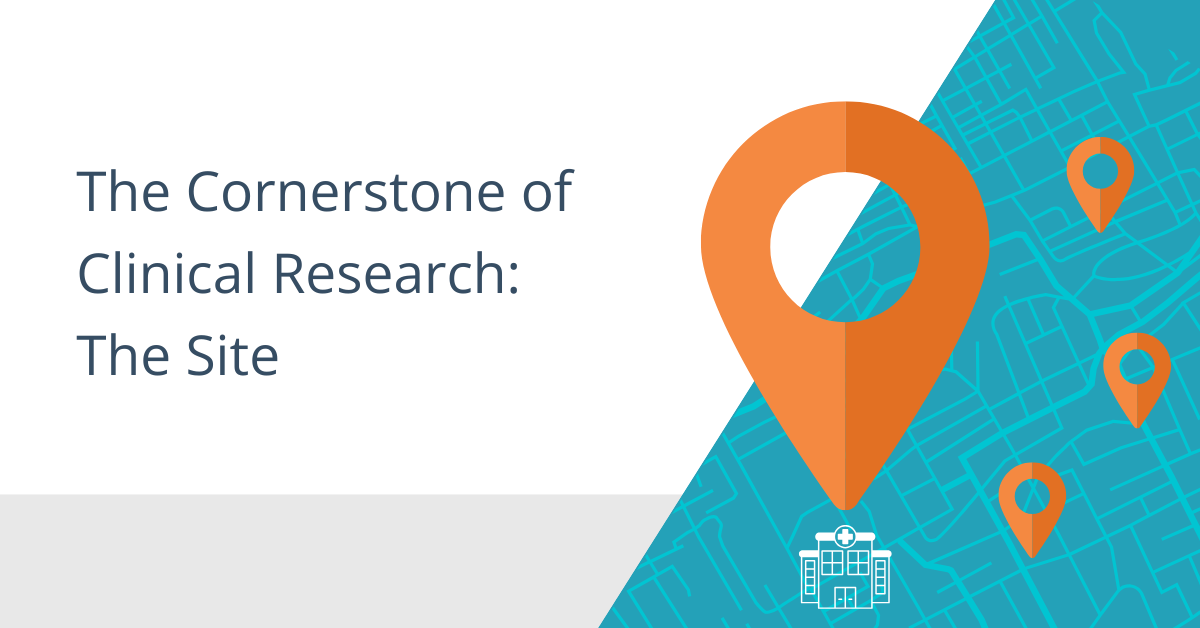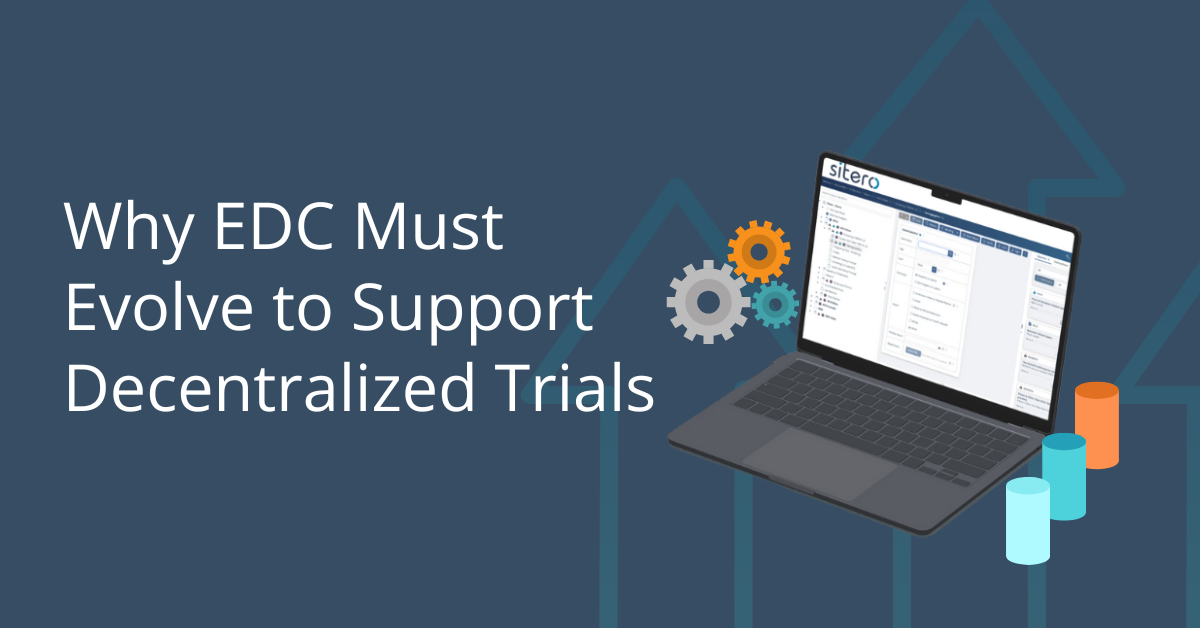
The Cornerstone of Clinical Research: The Site
Investigator sites are the cornerstone of clinical research. Without site teams, including Principal Investigators (PIs), Study Coordinators (SCs), and Research Nurses, clinical research would come to a standstill. Site teams play key roles in patient recruitment, patient care, data collection, and ultimately ensuring overall study compliance.
Too often industry shifts focus away from the sites’ overwhelming responsibilities and focuses instead on speed and checking off industry requirement “to dos,” all while trying to stay within a mandated study budget. However, the industry should be looking for solutions to enable site teams to work more efficiently in their daily work.
How can the pharma and biotech industry solve the unbalanced workload of clinical research site teams and strive for peak performance from our clinical site partners? We must first understand the reality and struggles that sites are facing and provide solutions including ongoing training on protocol nuances, implementing technology that enhances efficiency, and engaging with Site Advisory Boards.
Current Site Reality with Clinical Trials
Regulatory agencies place oversight of clinical studies and responsibility for research participants squarely on the Site PI. This includes implementation of the study at their site, site team training, protocol adherence, and ongoing patient safety oversight.
A 2014 article by the U.S. Bureau of Labor Statistics discussed Site Work Effort (SWE) as a “trial-level measure of the work effort required to implement the study protocol.” Between 1989 and 2011, the mean SWE per protocol nearly tripled—from 16.96 in 1989 to 47.51 in 2011. Since then, protocol design complexities continue to drive up site burden of trial participation for both sites and participants.
Modern protocol designs, including randomized controlled trials (RCTs), adaptive designs, sub-studies, and open-label extensions, have significantly increased in complexity. Additionally, the rise of data collection requirements and the introduction of decentralized clinical trial (DCT) have added to site management burdens. The FDA’s recent DCT guidance has indicated that the PI will still hold oversight responsibility for all participant visits even if visits are performed remotely via DCT tools. Site teams are not only responsible for managing these complexities but also for navigating the growing challenges of participant recruitment.
Participant recruitment remains the industry benchmark for site and study success, often creating friction between sites, Sponsors, and CROs. The same publication from the US Bureau of Labor Statistics showed that while SWE nearly tripled, the mean number of participants enrolled per site declined by over 50% from 1989 to 2011. Today, recruitment is more challenging than ever.
When a site fails to meet recruitment expectations, the Sponsor often imposes additional meetings and documentation requirements However, these administrative burdens increase SWE without necessarily improving recruitment outcomes. The industry owes it to site teams to have a deep understanding of the current landscape sites are working in to find opportunities to better partner and to partner more effectively, streamline workflows, and allow sites to focus on what matters most — supporting their patients.
Platform Technology Adoption
Implementing a single platform that can optimize site workflows, centralize data, and eliminate the duplication of data entry is a start. The industry has a heavy focus on integrations between sponsor clinical systems such as IRT-EDC-CTMS; however, there has been less attention to integration with site technology. A stronger focus on site-facing technology could reduce a site’s trial data entry burden, advance insights into trial requirements, enable risk-based oversight, and streamline the overall data lifecycle—from data entry through data lock.
As noted above, SWE for sites is hefty even before any participant is recruited and data entered. Numerous articles highlight the increasing number of electronic technologies sites need to log into just for one study — often with separate logins for each distinct technology platform. Now, with DCT tools such as wearables, telehealth apps, and eConsent, the administrative burden has only grown.
Even if the data from all of these digital technologies can be “synced” up on the backend using APIs, it doesn’t lessen the burden for sites. Having a single platform that allows a site to log into one system and then choose which application to open would be a game changer for reducing site SWE.
Site Advisory Boards and Consortia
Collaborations between sites through Advisory boards and consortia should facilitate knowledge sharing, improve clinical research efficiency, and enhance recruitment efforts. Too often the industry silos sites by limiting access to information specific to a single study rather than sharing broader industry insights.
It is important for the industry to understand the current site workforce situation as well as regulatory and technology challenges. Having an open dialogue with all parties allows for discussions on all aspects of clinical research, leveraging collective experience and expertise to overcome common challenges, standardize procedures, and ultimately increase the overall capacity for conducting high-quality clinical trials
Ongoing Training and Support
Investing in initial training for new research sites and ongoing training for experienced sites with new staff is essential for maintaining and growing the site pool. Years of data demonstrate that highly engaged sites with well-trained staff directly contribute to improved trial quality. However, clinical trials rarely incorporate continuous training tools or easily accessible quick-reference materials, relying instead on traditional training methods. Shifting to more adaptive, on-demand training could help sites stay current and better equipped to manage trial complexities.
Conclusions
Clinical research sites are indispensable partners in advancing medical science. However, the increasing complexity of clinical trials, growing administrative burdens, and recruitment challenges place significant strain on site teams. By addressing these obstacles and fostering a more collaborative and supportive environment, the industry can empower sites to operate more efficiently, focus on patient care, and drive the successful execution of clinical trials.
Join Sitero’s Site Advisory Board to share your insights, collaborate with industry leaders, and help shape the future of site-centric clinical research. Together, we can create solutions that improve trial efficiency, reduce site burdens, and enhance patient outcomes.
The future of clinical trials is a unified, interoperable ecosystem. Sitero’s Mentor platform is leading this transformation, ensuring that clinical trials are more efficient, compliant, and streamlined than ever before. Learn more in our latest blog:
Today’s trials require data entry from anyone, anywhere including patients, sites, home nurses, and remote investigators. Learn why EDC systems must evolve to support decentralized trails in our latest blog:




